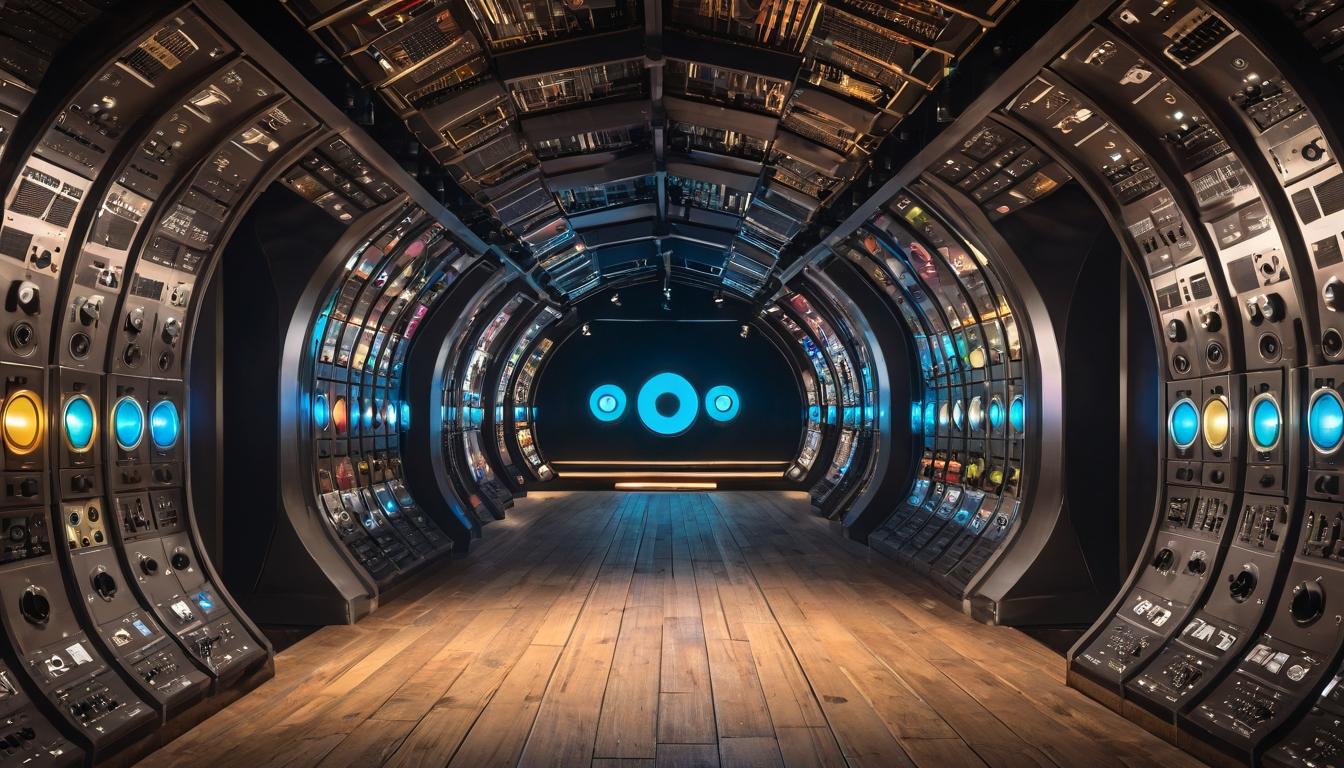In the dimly lit corners of streaming platforms and basement venues, a seismic shift is brewing. While major labels chase viral moments and algorithm-friendly formulas, a new generation of artists is quietly building movements that defy categorization. These aren't just musicians—they're cultural architects designing soundscapes that will inevitably reshape what we consider mainstream in the coming years.
Take the hyperpop diaspora, for instance. What began as a niche internet phenomenon has splintered into dozens of micro-genres, each with its own visual aesthetic, production philosophy, and community ethics. Artists like underscores and Jane Remover aren't just making music—they're creating entire worlds where glitchy breakdowns coexist with heartbreaking melodies, where digital artifacts become emotional textures rather than technical errors. Their work represents a fundamental rethinking of what pop music can be, challenging the clean, polished production that has dominated charts for decades.
Meanwhile, in cities from Lisbon to Lagos, a new wave of electronic producers is blending traditional rhythms with futuristic sound design. These artists aren't simply sampling ethnic music for exotic flavor—they're engaging in deep cultural exchange, creating hybrid forms that honor heritage while pushing forward. The result is music that feels both ancient and cutting-edge, connecting diaspora communities while captivating global audiences hungry for authenticity in an increasingly homogenized musical landscape.
The most fascinating development might be what's happening in the spaces between genres. Artists like Yves Tumor and Eartheater operate in territory so fluid that traditional categorization becomes meaningless. Their work incorporates elements of noise, R&B, industrial, and classical, often within the same song. This isn't genre-hopping for novelty's sake—it's a genuine reflection of how contemporary listeners actually experience music, jumping between playlists and moods with fluid ease.
What's driving this fragmentation? The democratization of production tools plays a significant role, but the real catalyst might be the collapse of geographic barriers. A producer in Seoul can collaborate with a vocalist in São Paulo as easily as neighbors might have decades ago. This global network has created what some critics call "the great remix"—a continuous cross-pollination of sounds and ideas that makes regional scenes increasingly difficult to define.
The business models supporting these movements are just as innovative as the music itself. Many artists are bypassing traditional industry structures entirely, building careers through Patreon, Bandcamp, and direct-to-fan relationships. Some are even experimenting with Web3 technologies, though the hype around NFTs has largely given way to more practical applications like token-gated communities and decentralized funding models.
This isn't to say the major label system is obsolete—far from it. But the relationship between underground and mainstream has fundamentally changed. Instead of underground scenes feeding talent upward, we're seeing a more complex ecosystem where ideas flow in multiple directions. Major artists now frequently incorporate underground production techniques, while underground scenes absorb and reinterpret mainstream trends at lightning speed.
The most successful artists in this new landscape share a common trait: they understand that music is no longer just about sound. It's about creating immersive experiences that extend across social media, visual art, fashion, and live performance. An artist's TikTok presence might be as carefully crafted as their album sequencing, their merch designs as considered as their cover art.
This holistic approach reflects a deeper truth about how we consume culture today. Listeners don't just want songs—they want worlds to inhabit, communities to join, identities to try on. The artists thriving in this environment are those who can build these ecosystems while maintaining artistic integrity.
What does this mean for the future? We're likely to see even more fragmentation before any new consolidation emerges. The concept of "the next big thing" might become increasingly irrelevant as attention splinters across countless micro-scenes. Success will be measured not in chart positions but in cultural impact and community building.
The most exciting development might be how these underground movements are influencing mainstream pop from the edges. Elements that seemed radical just a few years ago—distorted vocals, unconventional song structures, genre collisions—are gradually becoming normalized. The underground isn't just where new sounds are born; it's where the very definition of music is being rewritten.
As we look ahead, the most important question isn't which specific artists will break through, but how these underground innovations will transform our relationship with music itself. The boundaries between creator and audience, between professional and amateur, between art and commerce are all being redrawn in real time. The result is a musical landscape more diverse, more democratic, and more exciting than anything we've seen before.
The underground sounds shaping tomorrow's mainstream

